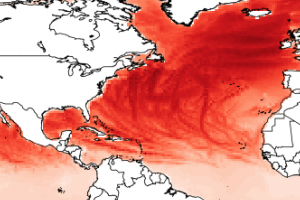[av_one_third first min_height=” vertical_alignment=” space=” custom_margin=” margin=’0px’ link=” linktarget=” link_hover=” padding=’0px’ border=” border_color=” radius=’0px’ background=’bg_color’ background_color=” background_gradient_color1=” background_gradient_color2=” background_gradient_direction=’vertical’ src=” background_position=’top left’ background_repeat=’no-repeat’ animation=” mobile_breaking=” mobile_display=” av_uid=’av-16ihb1′]
[av_hr class=’custom’ height=’50’ shadow=’no-shadow’ position=’left’ custom_border=’av-border-fat’ custom_width=’50px’ custom_border_color=’#4467d0′ custom_margin_top=’0px’ custom_margin_bottom=’0px’ icon_select=’no’ custom_icon_color=” icon=’ue808′ font=’entypo-fontello’ av_uid=’av-jjssutd7′ admin_preview_bg=”]
[av_heading heading=’O’Brien, T. A., W. D. Collins, K. Kashinath, O. Rübel, S. Byna, J. Gu, H. Krishnan, and P. A. Ullrich’ tag=’h3′ link_apply=” link=” link_target=” style=’blockquote modern-quote’ size=” subheading_active=’subheading_below’ subheading_size=’15’ margin=” padding=’10’ color=” custom_font=” custom_class=” admin_preview_bg=” av-desktop-hide=” av-medium-hide=” av-small-hide=” av-mini-hide=” av-medium-font-size-title=” av-small-font-size-title=” av-mini-font-size-title=” av-medium-font-size=” av-small-font-size=” av-mini-font-size=”][/av_heading]
[av_heading heading=’2016′ tag=’h3′ link_apply=” link=” link_target=” style=’blockquote modern-quote’ size=” subheading_active=’subheading_below’ subheading_size=’15’ margin=” padding=’10’ color=” custom_font=” custom_class=” admin_preview_bg=” av-desktop-hide=” av-medium-hide=” av-small-hide=” av-mini-hide=” av-medium-font-size-title=” av-small-font-size-title=” av-mini-font-size-title=” av-medium-font-size=” av-small-font-size=” av-mini-font-size=”][/av_heading]
[av_textblock size=” font_color=” color=” av-medium-font-size=” av-small-font-size=” av-mini-font-size=” av_uid=’av-jjunpeic’ admin_preview_bg=”]
DOI
[/av_textblock]
[av_hr class=’custom’ height=’50’ shadow=’no-shadow’ position=’left’ custom_border=’av-border-fat’ custom_width=’50px’ custom_border_color=’#4467d0′ custom_margin_top=’0px’ custom_margin_bottom=’0px’ icon_select=’no’ custom_icon_color=” icon=’ue808′ font=’entypo-fontello’ av_uid=’av-jjssutd7′ admin_preview_bg=”]
[/av_one_third][av_two_third min_height=” vertical_alignment=’av-align-top’ space=” margin=’0px’ margin_sync=’true’ link=” linktarget=” link_hover=” padding=’0px’ padding_sync=’true’ border=” border_color=” radius=’0px’ radius_sync=’true’ background=’bg_color’ background_color=” background_gradient_color1=” background_gradient_color2=” background_gradient_direction=’vertical’ src=” attachment=” attachment_size=” background_position=’top left’ background_repeat=’no-repeat’ animation=” mobile_breaking=” mobile_display=” av_uid=’av-wa9wl’]
[av_heading tag=’h2′ padding=’10’ heading=’Resolution dependence of precipitation statistical fidelity in hindcast simulations’ color=” style=’blockquote modern-quote’ custom_font=” size=” subheading_active=’subheading_below’ subheading_size=’15’ custom_class=” admin_preview_bg=” av-desktop-hide=” av-medium-hide=” av-small-hide=” av-mini-hide=” av-medium-font-size-title=” av-small-font-size-title=” av-mini-font-size-title=” av-medium-font-size=” av-small-font-size=” av-mini-font-size=” margin=” av_uid=’av-bw4ir’][/av_heading]
[av_image src=’http://climatemulti.wpengine.com/wp-content/uploads/sites/22/2018/07/storm-lines-25-100-km-300×127.png’ attachment=’303′ attachment_size=’medium’ align=” styling=” hover=” link=” target=” caption=” font_size=” appearance=” overlay_opacity=’0.4′ overlay_color=’#000000′ overlay_text_color=’#ffffff’ copyright=” animation=’no-animation’ av_uid=’av-9tzwy’ admin_preview_bg=”][/av_image]
[av_textblock size=” font_color=” color=” av-medium-font-size=” av-small-font-size=” av-mini-font-size=” av_uid=’av-jjst1fu9′ admin_preview_bg=”]
Abstract
Numerous studies have shown that atmospheric models with high horizontal resolution better represent the physics and statistics of precipitation in climate models. While it is abundantly clear from these studies that high‐resolution increases the rate of extreme precipitation, it is not clear whether these added extreme events are “realistic”; whether they occur in simulations in response to the same forcings that drive similar events in reality. In order to understand whether increasing horizontal resolution results in improved model fidelity, a hindcast‐based, multiresolution experimental design has been conceived and implemented: the InitiaLIzed‐ensemble, Analyze, and Develop (ILIAD) framework. The ILIAD framework allows direct comparison between observed and simulated weather events across multiple resolutions and assessment of the degree to which increased resolution improves the fidelity of extremes. Analysis of 5 years of daily 5 day hindcasts with the Community Earth System Model at horizontal resolutions of 220, 110, and 28 km shows that: (1) these hindcasts reproduce the resolution‐dependent increase of extreme precipitation that has been identified in longer‐duration simulations, (2) the correspondence between simulated and observed extreme precipitation improves as resolution increases; and (3) this increase in extremes and precipitation fidelity comes entirely from resolved‐scale precipitation. Evidence is presented that this resolution‐dependent increase in precipitation intensity can be explained by the theory of Rauscher et al. (2016), which states that precipitation intensifies at high resolution due to an interaction between the emergent scaling (spectral) properties of the wind field and the constraint of fluid continuity.
[/av_textblock]
[/av_two_third]

